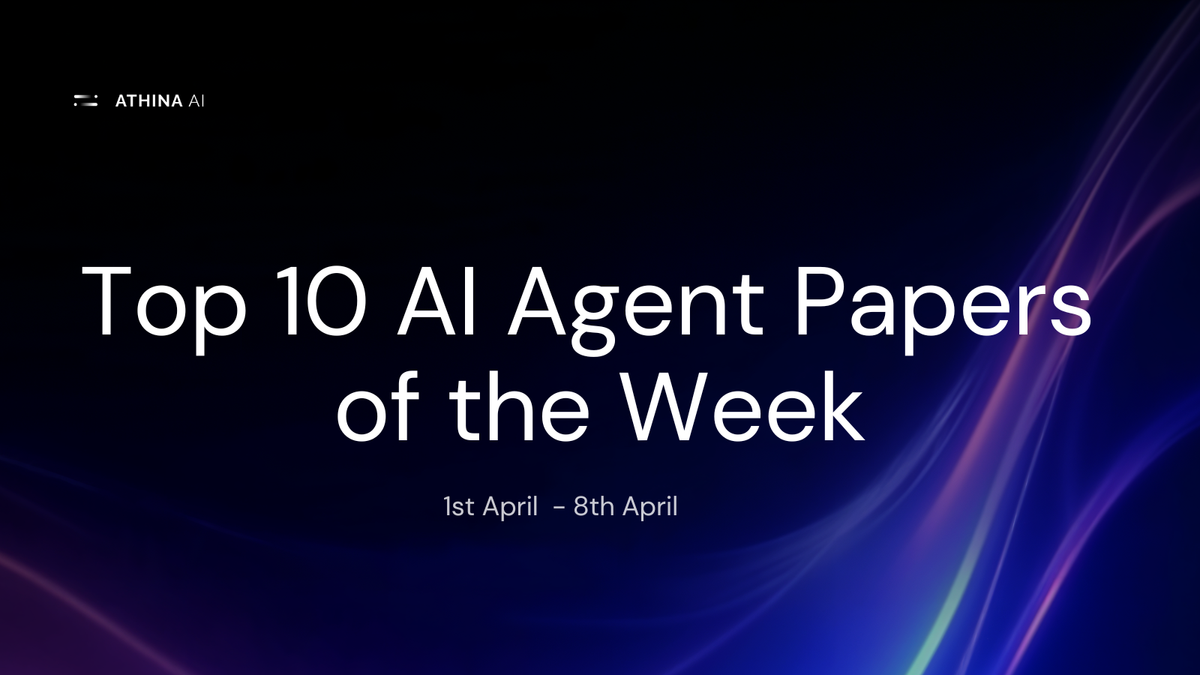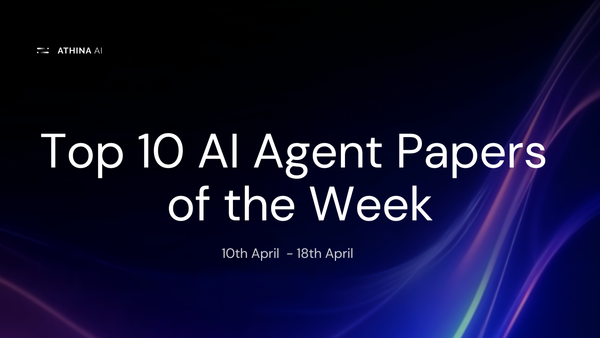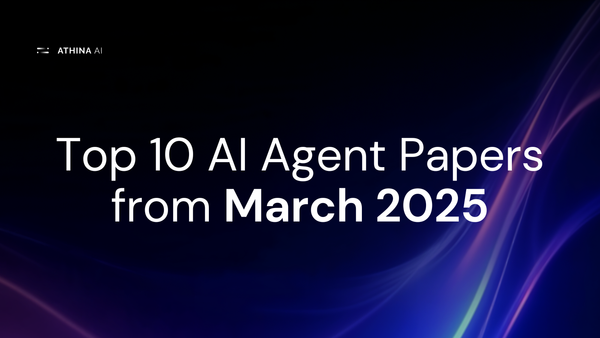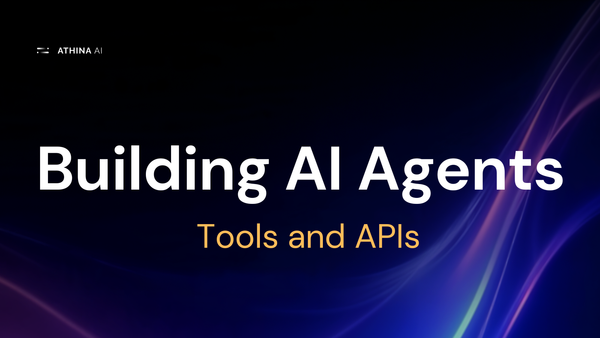Top 10 AI Agent Papers of the Week: 1st April - 8th April

As April begins, the AI Agent landscape continues to evolve at an historic pace, with groundbreaking research shaping the future of intelligent systems.
In this article, we spotlight the Top 10 Cutting-Edge Research Papers on AI Agents from this week, breaking down key insights, examining their impact, and highlighting their role in advancing AI capabilities. Let’s dive in.
1) Knowledge-Aware Step-by-Step Retrieval for Multi-Agent Systems
This paper presents a new LLM-driven agent framework that dynamically refines queries and filters evidence using an evolving internal knowledge cache, separate from external sources. The system avoids feedback bias and supports accurate, autonomous search paths. Tested on complex open-domain question answering tasks, it surpasses single-step and traditional iterative methods in both performance and efficiency. It also enables multi-agent collaboration, showing scalability and strong results even with lightweight LLMs.
Why it Matters:
This framework boosts LLM reasoning and accuracy in complex tasks while reducing dependency on model size. Its scalability and collaboration potential make it well-suited for real-world, multi-source information problems.
2) COWPILOT: A Framework for Autonomous and Human-Agent Collaborative Web Navigation
The paper introduces COWPILOT, a framework that supports both autonomous and collaborative human-agent web navigation. It enables agents to suggest actions while allowing users to intervene, override, or guide decisions as needed. Evaluations on five websites show a 95% task success rate with humans performing only 15.2% of the steps, highlighting effective collaboration. The agent also contributes meaningfully even when user interventions occur.
Why it Matters:
COWPILOT bridges the gap between full automation and human control, making web agents more practical for real-world tasks. It also provides a foundation for studying human-agent interaction and improving agent training.
3) Do LLM Agents Have Regret? A Case Study in Online Learning and Games
This paper investigates how well LLM-based agents perform in decision-making, particularly in multi-agent scenarios, using the concept of regret as a metric. Through empirical studies and theoretical analysis, the authors assess no-regret behavior in online learning and game theory tasks, finding both successes and failures (even in GPT-4). To improve performance, they introduce regret-loss, an unsupervised training method that promotes no-regret learning without needing labeled actions, and show its effectiveness both statistically and empirically.
Why it Matters:
The study reveals fundamental limitations in LLM decision-making and offers a practical method to enhance agent performance in dynamic, interactive environments. It lays groundwork for building more robust and reliable AI agents in real-world applications.
4) Autono: A ReAct-Based Highly Robust Autonomous Agent Framework
This paper introduces a robust autonomous agent framework grounded in the ReAct paradigm, capable of adaptive decision-making and multi-agent collaboration. It avoids rigid workflows by generating actions dynamically and includes a novel "timely abandonment" strategy using probabilistic penalties to manage execution paths. A memory transfer mechanism allows agents to share updated context, and modular design supports external tool integration and action space expansion.
Why it Matters:
The framework enhances resilience and efficiency in solving complex tasks, particularly through adaptive execution and smart multi-agent cooperation. It offers developers fine-grained control over agent behavior in dynamic environments.
5) “You just can’t go around killing people” Explaining Agent Behavior to a Human Terminator
This paper addresses human-agent interaction in settings where a human can temporarily take over a pre-trained agent's operations. It formalizes the trade-off between too few interventions (risky autonomy) and too many (eroded trust), which commonly arises in domains like autonomous driving and healthcare. To navigate this balance, the authors propose an explainability scheme aimed at optimizing human takeovers.
Why it Matters:
By enhancing transparency and trust, the proposed approach supports safer and more effective collaboration between humans and AI agents in critical real-world environments.
6) AutoPDL: Automatic Prompt Optimization for LLM Agents
The paper presents AutoPDL, an automated system for optimizing prompt configurations in LLMs across various patterns (e.g., Zero-Shot, CoT, ReAct) and content types. Framing the task as an AutoML problem, it uses successive halving to efficiently search the combinatorial space of prompting strategies. AutoPDL generates interpretable and reusable PDL programs, supporting human-in-the-loop customization and transferability.
Why it Matters:
AutoPDL simplifies and improves prompt engineering, boosting LLM performance across models and tasks while reducing manual effort. It offers a scalable, adaptable solution to optimizing agent behavior in diverse applications.
7) Among Us: A Sandbox for Agentic Deception
This paper introduces a sandbox environment using Among Us to study naturalistic deception in LLM agents through social interaction. It proposes Deception ELO to quantify deceptive skill and shows that advanced models tend to deceive better rather than detect deception. The study evaluates various AI safety tools and finds them effective at detecting lies, even beyond the training distribution.
Why it Matters:
The work provides a realistic, open-source testbed for researching deceptive behavior in AI, offering a valuable resource for developing and validating alignment and safety strategies in future AI systems.
8) Self-Resource Allocation in Multi-Agent LLM Systems
This paper investigates how LLMs can manage multi-agent systems by allocating computational tasks based on cost, efficiency, and performance. It compares LLMs acting as orchestrators versus planners, finding planners more effective at managing concurrent tasks. Results show that providing detailed information about agent capabilities leads to better task allocation, especially when agents vary in performance.
Why it Matters:
The study highlights LLMs' potential in coordinating multi-agent systems efficiently, paving the way for scalable and intelligent task distribution in complex, real-world applications.
9) Building LLM Agents by Incorporating Insights from Computer Systems
This paper introduces USER-LLM R1, a user-aware conversational agent that tackles the cold start problem in social robotics by inferring user preferences through CoT reasoning and vision-language models. The system uses a RAG-based architecture to dynamically refine user profiles from multimodal inputs, enabling immediate and personalized interactions. Evaluations show strong performance gains, especially for elderly users, in both automated metrics and human assessments.
Why it Matters:
USER-LLM R1 enables robots to personalize interactions from the first encounter, improving engagement and trust—particularly in sensitive applications like elder care—while emphasizing ethical design and user privacy.
10) Are Autonomous Web Agents Good Testers?
This paper explores using Autonomous Web Agents (AWAs) as Autonomous Test Agents (ATAs) to execute natural language test cases, reducing reliance on brittle automated scripts. It introduces a benchmark of web apps and test cases, and evaluates two ATA implementations—SeeAct-ATA and the more effective PinATA. PinATA achieves 60% accuracy and 94% specificity but still reveals notable limitations.
Why it Matters:
By leveraging LLMs for test automation, this approach shows promise for reducing manual effort and maintenance in software testing. It opens a path toward more adaptable and intelligent testing tools.
Conclusion
As April begins, this week’s top research continues to drive AI innovation across Agents. From refining multi-agent interactions to enhancing retrieval efficiency and evaluation methodologies, these studies highlight the rapid advancements shaping the future of AI. As the field progresses, these breakthroughs will be instrumental in building more intelligent, reliable, and scalable AI systems.
Ready to enhance your AI development? Discover Athina AI—your go-to platform for building, testing, and monitoring AI-driven features.



